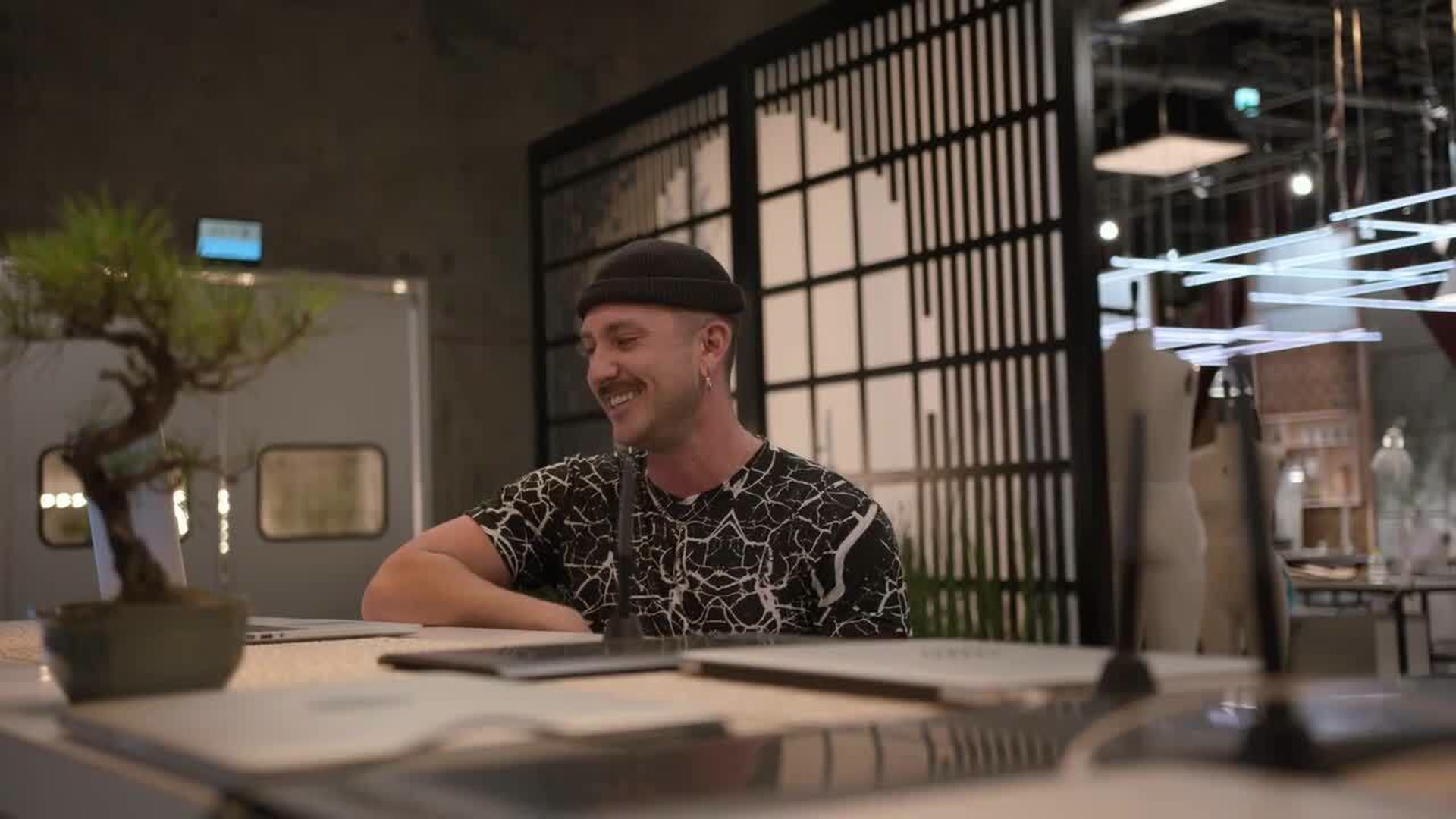television
Tim Gunn & Heidi Klum: Why Fashion Remains a Leader in LGBTQ Inclusion

As seen in Making the Cut, the industry abounds with queer talent. Its executive producers explain why.
April 24 2020 1:04 PM EST
dnlreynolds
By continuing to use our site, you agree to our Privacy Policy and Terms of Use.

As seen in Making the Cut, the industry abounds with queer talent. Its executive producers explain why.
There's no shortage of LGBTQ talent on Making the Cut. And in fact, straight designers may be in the minority on the Prime Video competition, in which contestants are vying for an Amazon fashion line and a $1 million prize to invest in their business.
Queer visibility abounds on the show. In an early episode, competitors Sabato Russo and Sander Bos charmed audiences acting like "an old married couple" on team "Papi and Bebe." And Jonny Cota sparked waterworks last week when he Skyped his husband to find him steaming garments alongside his family members at the launch of his new clothing store.
There's also the clothes -- every runway has included gender-nonconforming looks. In one Bos presentation, a male and female model swapped tops on the runway in a dramatic blurring of the binary. That's not mentioning the presence of gay style guru Tim Gunn as mentor, designer and judge Joseph Altuzarra, and Sara Rea, Making the Cut's showrunner, who also happens to be a lesbian.
This queer visibility on Making the Cut is representative of its industry. But why is it in 2020, when LGBTQ people have made strides in acceptance in many fields, that so many queer people find themselves drawn to fashion? The answer, in part, is that bias still persists outside of creative industries. Even at 25, Bos said he felt stigma's enduring power guiding his career growing up in Belgium.
"I wanted to become a farmer when I was a kid. Then I realized I was gay as hell so I was like, 'OK, well, I guess I'll get into fashion," he said on Making the Cut. It's one of the few moments when LGBTQ identity is explicitly mentioned on the show. Additionally, Cota has been open about his experience of how clothing became a shield against the stigma he perceived around him in his youth.
Acceptance is just the norm in fashion, Gunn told The Advocate. On Making the Cut, it's just a given that the only thing judged about the designers is their clothes.
"For me, I guess it comes from my own sexuality. Being a design instructor and having lots and lots and lots and lots of lots of LGBTQ students, I'm just very matter-of-fact about it. It's a bit like our models of all sizes on Making the Cut. We never address it, because it's just the way the world is," Gunn said. "What I love about Making the Cut is we're the same way with LGBTQ issues. It's the way the world is, everyone, and we're all in this together."
(Related: Tim Gunn Is the Mentor the World Needs on Making the Cut)
Workplace discrimination remains a very real issue in the United States. A 2018 study from the Human Rights Campaign shows that nearly half of LGBTQ people are closeted in the workplace. Moreover, many states still legally allow discrimination in the absence of a nationwide Equality Act.
In light of this climate, fashion's unquestioned acceptance, which has allowed so many LGBTQ people to flourish historically and presently, can be a model for other industries that are seeking to become more diverse, Klum said.
"Because we're in entertainment and we're already in the fashion industry, I think we have had a variety of many different kinds of human beings for a really long time. I feel like everyone else is kind of catching up now," she said.
"A long time, for us," Gunn added.
In addition to workplace acceptance, Making the Cut shows the power of family acceptance through Cota, demonstrating how the longtime support of the gay designer's family directly led to his ability to thrive in fashion.
"His story contributed greatly to the success because it's given him a sense of confidence," Gunn said. "It's given him a sense of being wanted and needed. It grounds him. And that's very, very important, especially in an industry that's so, on the one hand, prepared to cuddle and nurture you and, on the other hand, it's just as prepared to say, well, you're yesterday, goodbye. So having that support is something everyone would benefit from."
Cota, along with Bos and Esther Pembrandt -- a German designer whose clothes challenge the binary and have advocated for marriage equality -- are among the designers featured in the final two episodes." In episode 9, the competitors are tasked with creating pop-up shops, and even there, the strength of Cota's family's support was on full display.
"Everyone came and the kids were running [around]," Klum marveled. "It's beautiful to see how close he is with his family and how supportive everyone is and how he has his partner for so long. It was beautiful."
The final two episodes of Making the Cut are now streaming on Amazon Prime TV. Revisit Cota feel the love from his family below.

Charlie Kirk DID say stoning gay people was the 'perfect law' — and these other heinous quotes